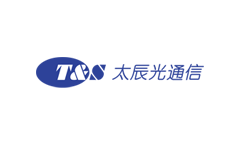What Aspects Should Be Paid Attention to when Choosing Fiber Optic Adapters?

The fiber optic adapter is an optical movable connector pair connecting components. The fiber optic adapter can precisely butt-joint two end faces of the optical fiber, so that the optical energy output of the transmitting optical fiber can be coupled to the receiving optical fiber to the maximum extent, and the same or different optical fiber connectors can be butt-jointed so that the optical path is smooth with little loss. So how do we choose Fiber Optic Adapters?
Flame retardant level of the fiber optic adapter
Flammability
UL94 grade is the most widely used flammability performance standard
for plastic materials. It is used to evaluate the ability of the
material to extinguish after being ignited. There are a variety of
judging methods such as burning speed, burning time, anti-drip ability, and whether the drip beads burn.
HB, V0, V1, and V2 are different flame-retardant grades. For different grades, different testing methods for flame resistance, and different criteria for testing and determination are adopted, and the flame-retardant grades increase from HB, V-2, V-1 to V-0 step by step.
Insertion loss of the fiber optic adapter
Generally, the insertion loss should be less than 0.2dB. If the insertion loss is too high, the optical transmission will be affected.
Repeatability of the fiber optic adapter
The fiber optic adapter needs to be inserted and removed frequently in the service process. Therefore, the durability of the fiber optic adapter requires high requirements. In normal standards, the fiber optic adapter can be inserted and removed more than 500 times without affecting the performance without changing the insertion loss.
Operating temperature of the fiber optic adapter
The normal operating temperature of a fiber optic adapter ranges from -40℃ to 75℃, while that of an LC adapter ranges from -40℃ to 85℃.
The material of the alignment sleeve of the fiber optic adapter
The alignment sleeve is the most important component of the fiber optic adapter. It is usually made of metal or ceramic. Because the crystal structure of ceramics is hard and not easy to deform, fast alignment and high precision butt jointing of fiber end can be realized.
The above is all the content about how to select the fiber optic adapter. When choosing the fiber optic adapter, the above important properties can be used to select the relatively high quality and stable fiber optic adapter. Of course, there are other factors that affect the quality, such as tensile strength, compliance standards, etc.
- +1 Like
- Add to Favorites
Recommend
- Cleaning Fiber Optic Adapters is a Mandatory for Jumper Installers
- How to Use Bare Fiber Adapters?
- OpDAT MV Highly Flexible Distributor Housing from METZ CONNECT is Designed for Fiber Optic and Copper Applications
- Fiber Optic Connectors Glass vs. Copper
- Knowledge about Fiber Optic Enclosures
- The Ultimate Guide to Fiber Optic Transceiver Modules
- Types of Fiber Optic Attenuators
- What Are the Components of Internet of Things?
This document is provided by Sekorm Platform for VIP exclusive service. The copyright is owned by Sekorm. Without authorization, any medias, websites or individual are not allowed to reprint. When authorizing the reprint, the link of www.sekorm.com must be indicated.





























































































































































































































































































































































































































































































































































































































































































































































































































































































